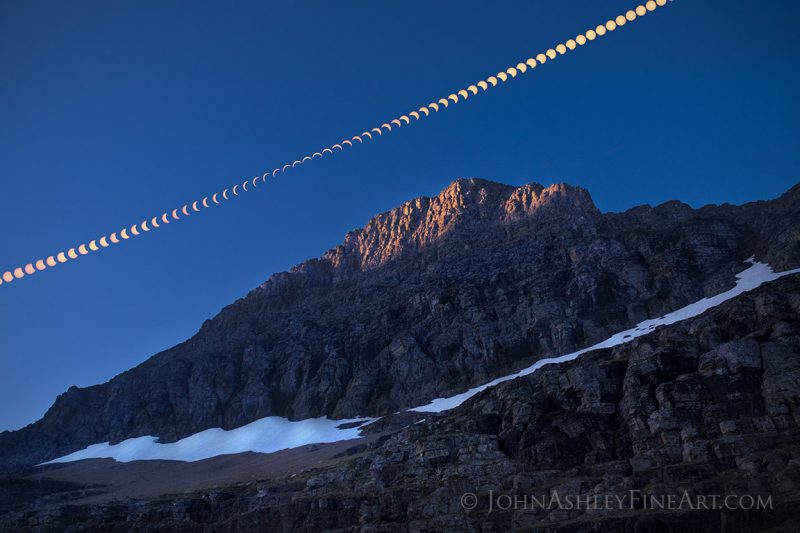
John Ashley wrote:
I knew there would be an abundance of excellent totality photographs, so I decided to look instead for some recognizable scene in Montana. I searched the state for a mountain with a slope that matched that of the sunrise and partial eclipse, settling on one of the best-known locations in Glacier. I picked this location during my scouting trip when I realized that the thin snow field would mirror the eclipse path, complete with a round ‘eclipse’ of rocks (my favorite part!).
To make the image, I arrived before dawn to set up my cameras/tripods and capture dawn’s first light on the mountain top, sans solar filter. Then I programmed the solar-filter protected camera to record images of the sun every 20 seconds, selecting those 2:20 minutes apart for this composite image. The eclipse began about three hours after sunrise at my location.
Thank you, John!
Bottom line: August 21, 2017 85% solar eclipse over Glacier National Park in Montana.











